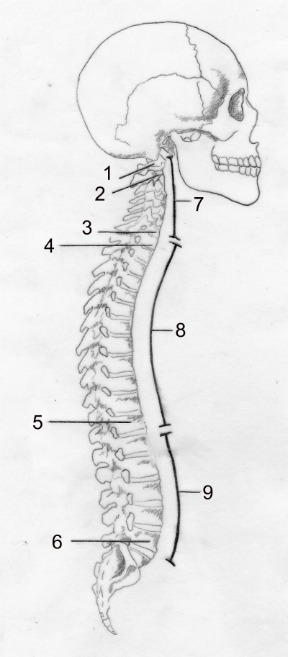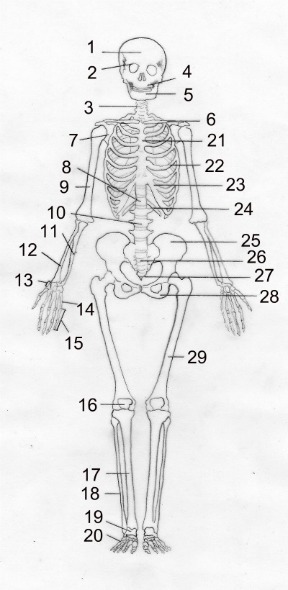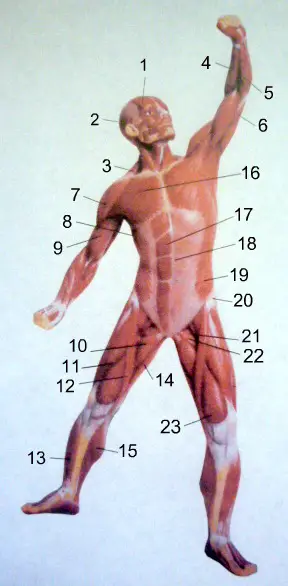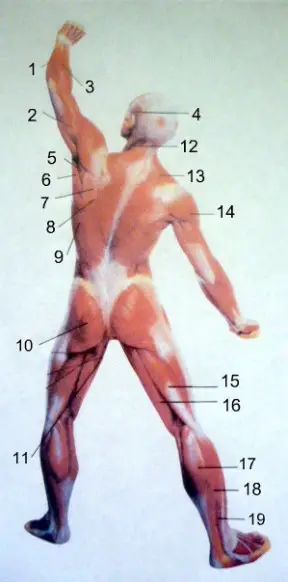BASIC DANCE ANATOMY
Dance anatomy is essentially the one of the musculoskeletal system, because this one is responsible for providing the human body with movement, hence the possibility of dancing.
It is widely recognized among our artistic community that having a good knowledge of dance anatomy is of great help for dancers, both for preventing injuries and for improving technical skills.
Therefore, this page provides some first, basic information about the muscular and skeletal systems, but this content will be expanded progressively in time.
I’m aware of the fact that dance anatomy is a large subject. Still, I believe beginners can find some starting tools here.
Organ Systems
The muscular and skeletal systems are two of the 10 major organ systems in the human body. Organ systems are composed of two or more different organs which work together to provide a common function. In our case, the function is movement.
When thinking in anatomical terms, we divide the organism and understand its functions in separated ways. Therefore we usually believe that movement is provided only by muscles and bones. Though, it is important to keep in mind that the human body is an organism, hence a whole unity (it is actually a human being and not just some flesh and blood).
So, the functioning of the musculoskeletal system might also be determined by other facts occurring to the person, whether they happen in another anatomical system of the body or whether they have an emotional or mental provenance.
The 10 major organ systems are:
Skeletal System, Muscular System, Circulatory System, Nervous System, Respiratory System, Digestive System, Excretory System, Endocrine System, Reproductive System, Lymphatic/Immune System.
Skeletal system
It is made up of bones, cartilage, tendons and ligaments. It accomplishes three major functions: providing support for the body, protecting delicate internal organs and providing attachment sites for the muscles or organs.
Bones are made up of different types of tissue: - Compact tissue (the harder, outer tissue of bones).- Cancellous tissue (the sponge-like tissue inside bones).- Subchondral tissue (the smooth tissue at the ends of bones, which is covered with another type of tissue called cartilage).
Axial Skeleton

1. Atlas (C1)
2. Axis
3. Seventh cervical vertebrae (C7)
4. First thoracic vertebrae (Th1)
5. Twelfth thoracic vertebrae (Th12)
6. Fifth lumbar vertebrae (L5)
7. Cervical curve
8. Thoracic curve
9. Lumbar curve
Complete skeleton

1. Frontal bone
2. Orbit of the eye
3. Cervical vertebrae
4. Upper maxillary
5. Lower maxillary
6. Clavicle
7. Scapula
8. Thoracic vertebrae
9. Humerus
10. Lumbar vertebrae
11. Ulna
12. Radius
13. Carpal
14. Metacarpal
15. Phalanges
16. Patella
17. Tibia
18. Fibula
19. Tarsus
20. Metatarsus
21. Sternum
22. True rib
23. Costal cartilage
24. False rib
25. Ilium
26. Sacrum
27. Coccyx
28. Ischium
29. Femur
Muscular system
It is made up of skeletal, cardiac and smooth muscles throughout the body. Its main role is to provide mobility (movement of the limbs or movement of materials through some organs like the stomach, intestine, heart and circulatory system).
The most important attribute of muscles is that they are made up of contractile fibers. They change their size to produce movement and both their possibility to contract and to expand is what creates their efficiency.
Anterior view of muscles

1. Frontalis
2. Orbicularis oculi
3. Trapezium
4. Brachioradialis
5. Forearm flexor
6. Brachial
7. Deltoid
8. Serratus anterior
9. Biceps brachii
10. Adductor
11. Rectus femoris
12. Sartorius
13. Tibialis anterior
14. Gracilis
15. Gastrocnemius
16. Pectoralis major
17. Rectus abdominis
18. Linea alba
19. External oblique
20. Tensor fasciae latae
21. Iliopsoas
22. Pectineus
23. Vastus lateralis
Posterior view of muscles

1. Flexor digitorum
2. Triceps brachii
3. Extensor digitorum
4. Temporalis
5. Teres minor
6. Teres major
7. Infraspinatus
8. Rhomboid major
9. Latissimus dorsi
10. Gluteal
11. Adductor magnus
12. Sternocleidomastoid
13. Trapezium
14. Deltoid
15. Biceps femoris
16. Semitendinosus
17. Gastrocnemius
18. Soleus
19. Peroneus brevis
Return from Dance Anatomy to Contemporary Dance Home Page
The handy e-book of CONTEMPORARY DANCE HISTORY:
The Dance Thinker is our occasional E-zine. Fill in the form below to receive it for free and join us.
Read:
"The Dance Thinker"
BACK ISSUES
Post contemporary dance announcements (workshops, auditions, performances, meetings and important news... it is free.)



